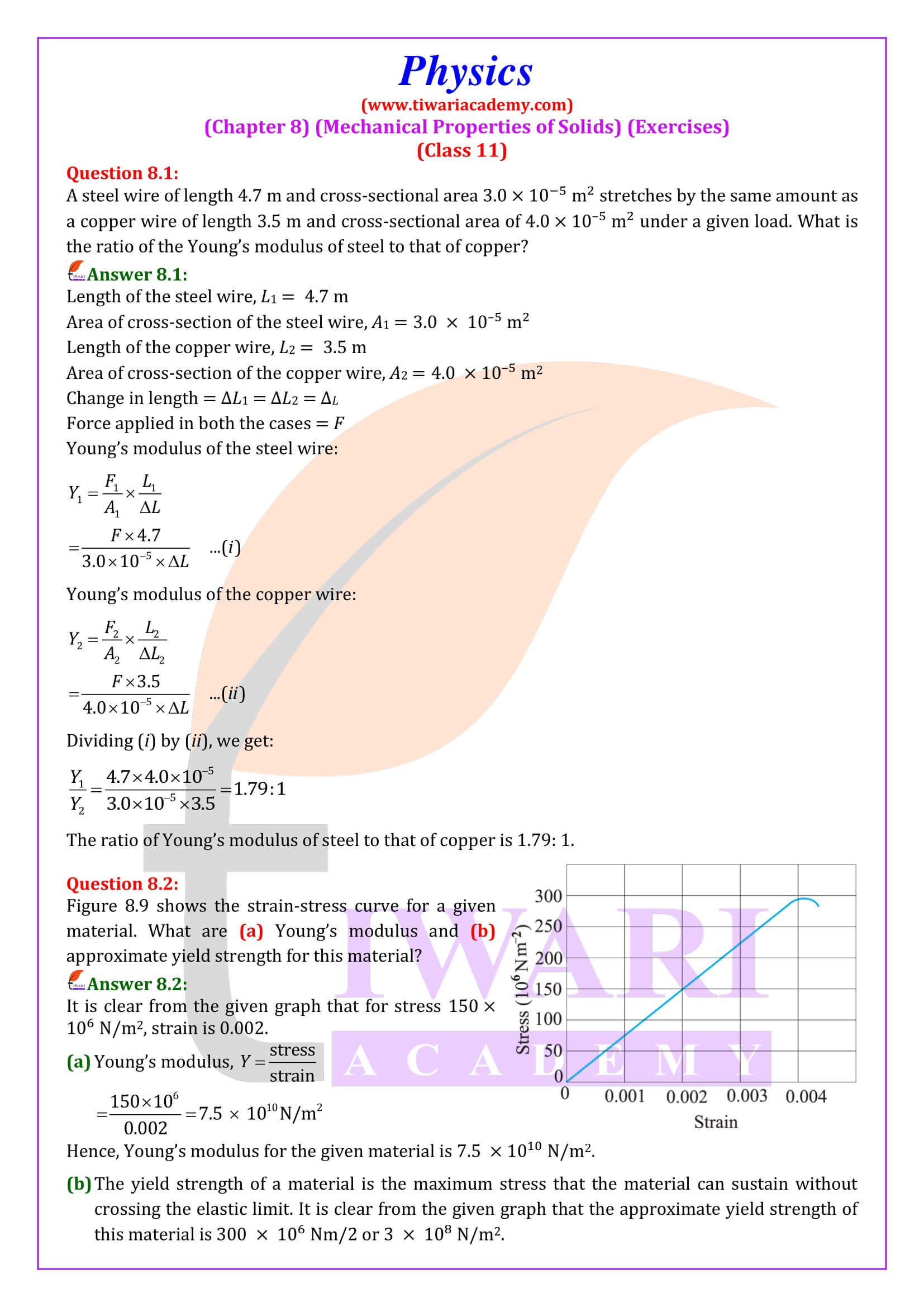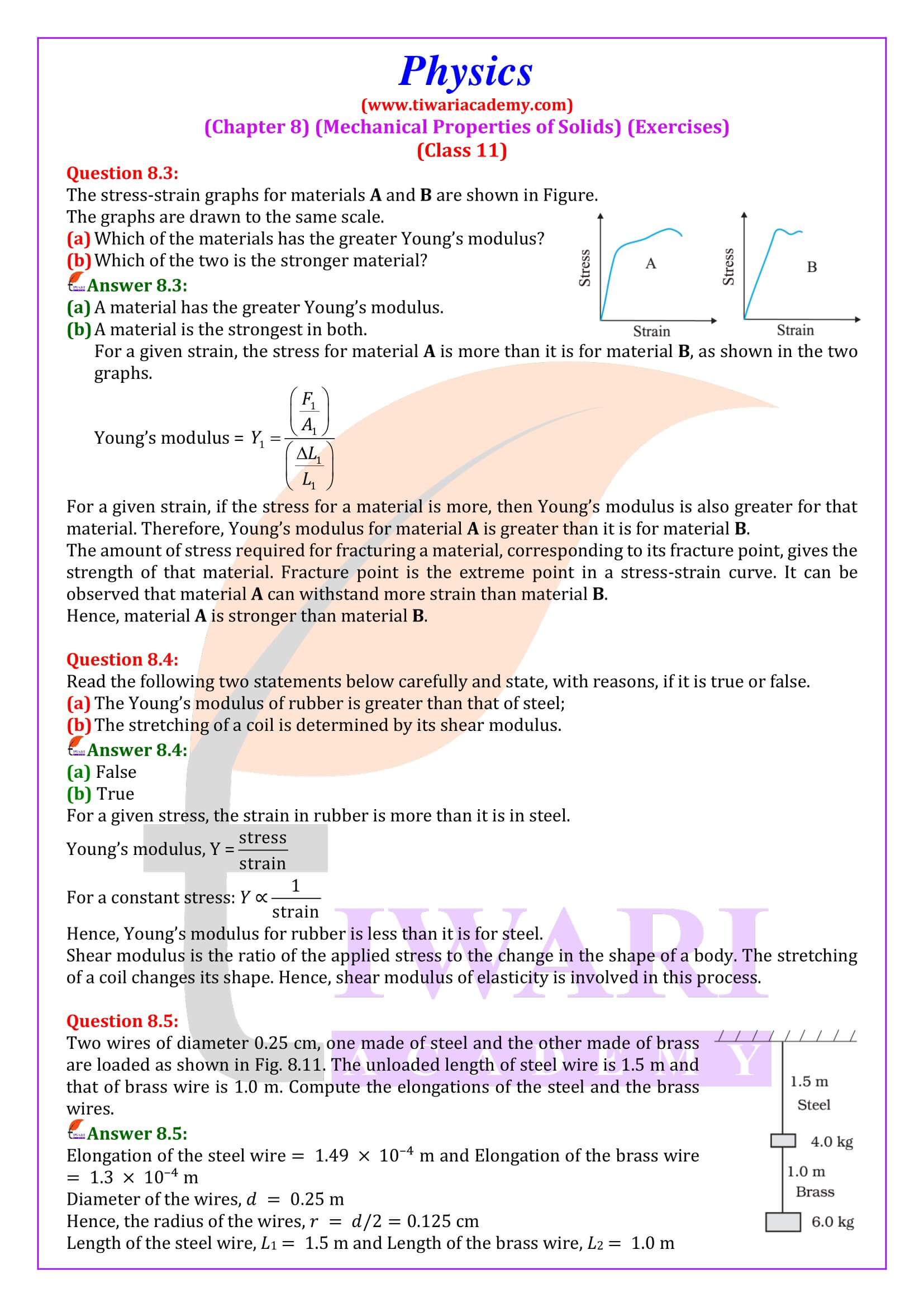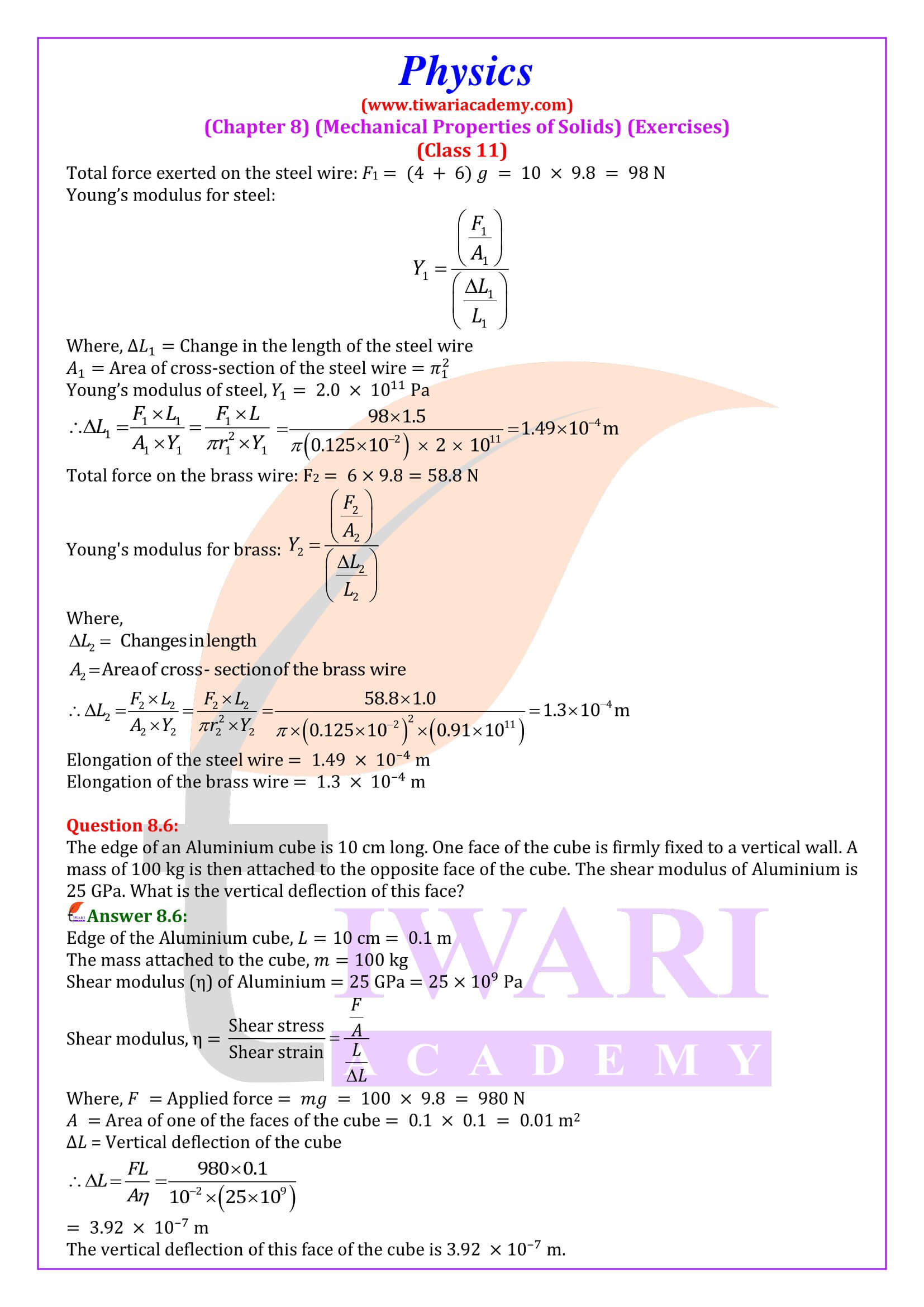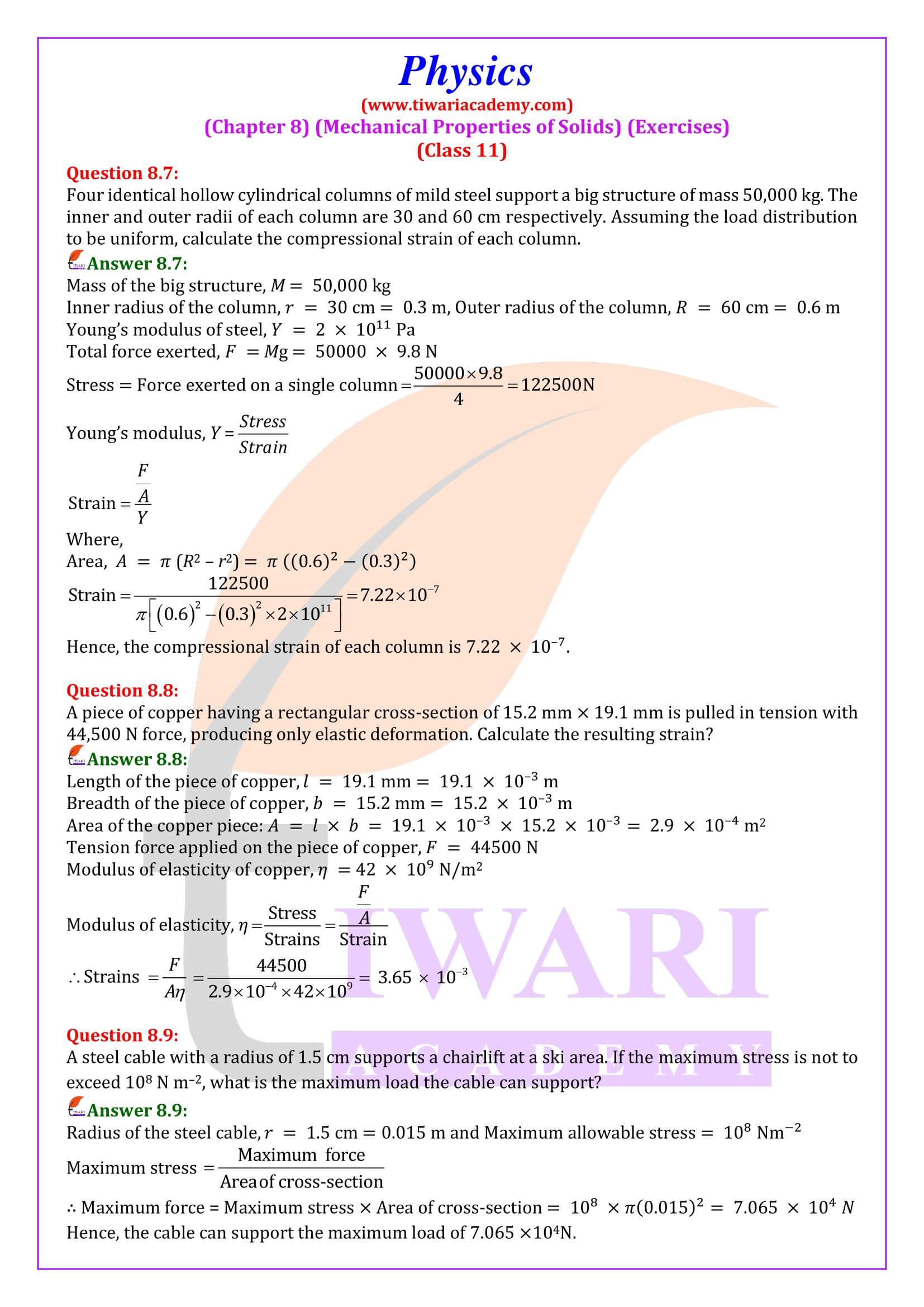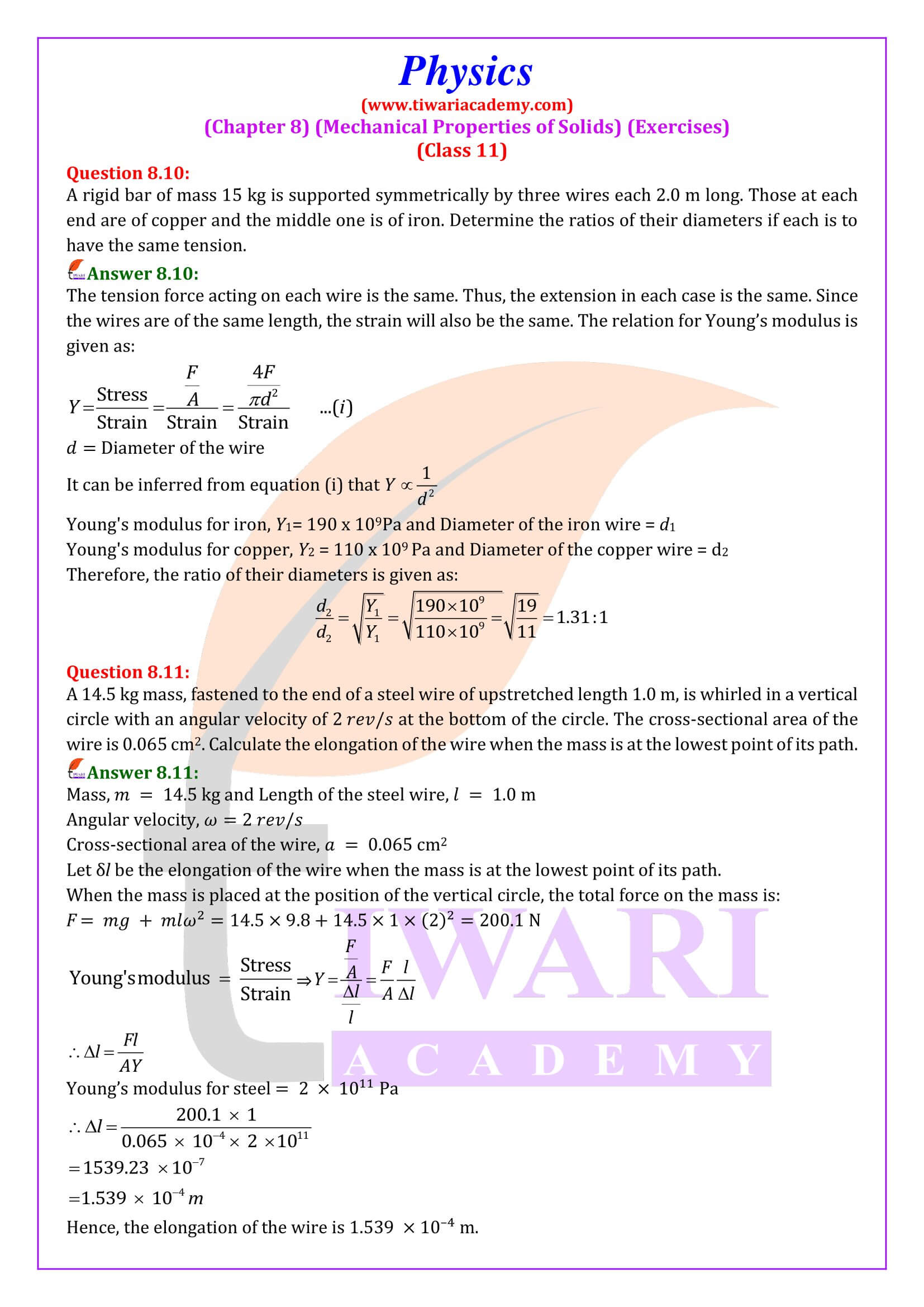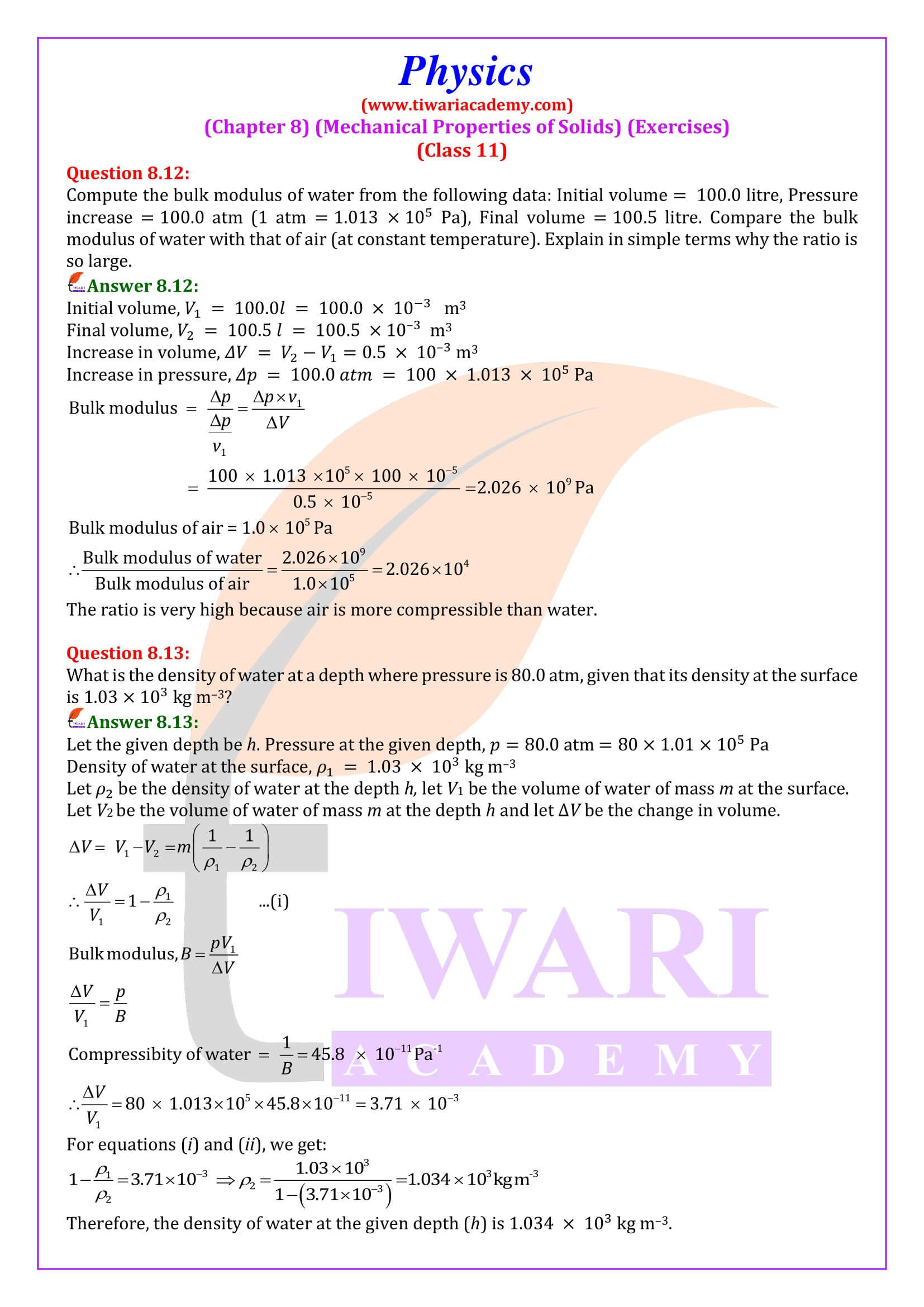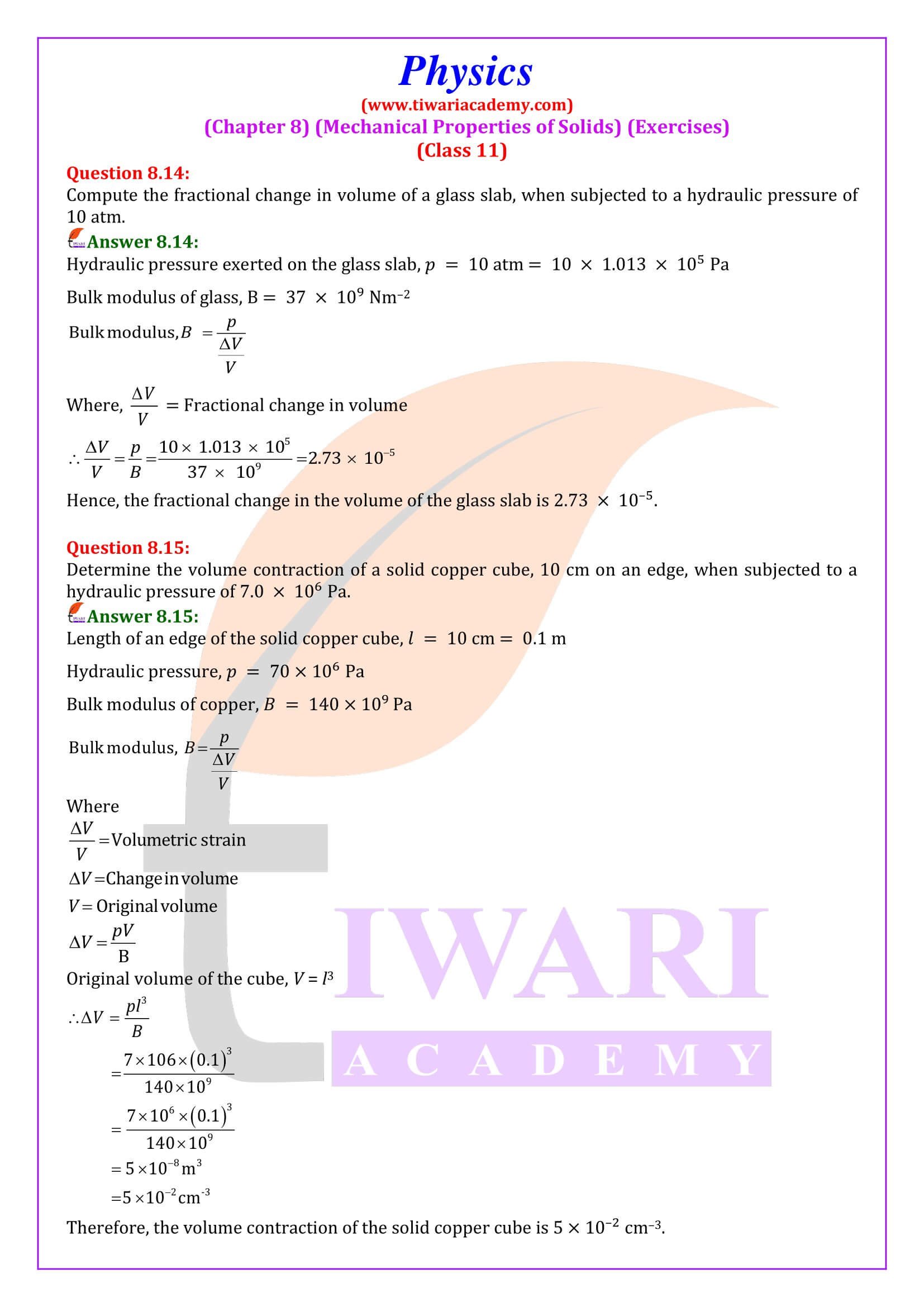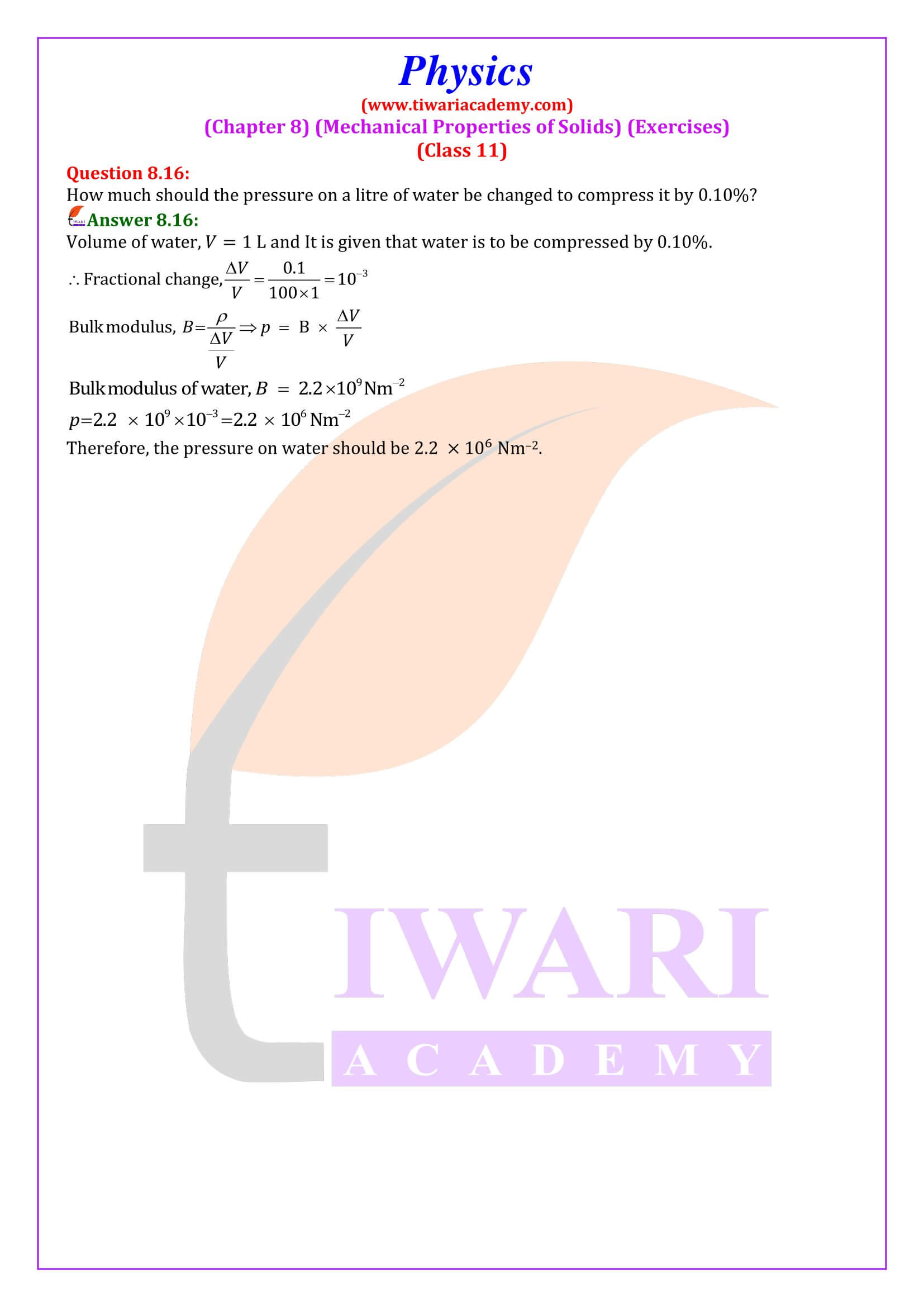NCERT Solutions for Class 11 Physics Chapter 8 Mechanical Properties of Solids updated for CBSE session 2024-25 with MCQ and Extra question answers in Hindi and English Medium. For topics that involve diagrams, graphs, and visual representations, practice drawing and interpreting them. Make sure you understand the significance of each element in these diagrams.
Class 11 Physics Chapter 8 Mechanical Properties of Solids Questions Answers
Class 11 Physics Chapte 8 MCQ
The ratio of the change in dimension at right angles to the applied force to the initial dimension is known as
When the intermolecular distance increases due to tensile force, then
The maximum load of a wire can withstand without breaking when its length is reduced to half of its original length, will
An iron bar of length l m and cross section A m² is pulled by a force of F Newton from both ends so as to produce and elongation in meters. Which of the following statements is correct?
Class 11 Physics Chapter 8 Topic – Elastic Behavior of Materials
Any rigid object in the universe will change its physical orientation and structure under the action of an external force. A rigid body changes length, volume, or shape when subjected to an external force. After the external force is removed, the body retains its original shape and size. Thus, elasticity is such a property of the body that when an external force is removed, anyone tends to return to their original shape (or) size. It shows opposition to change.
For example, rubber bands. When a solid is subjected to an external force, the object deforms and the atoms or molecules that compose it are displaced from their original position, disturbing the state of equilibrium. The displacement causes a change in the fixed point, which results in changes in the interatomic and intramolecular distances. Therefore, deformation can be called a change in the structure of any object due to the influence of forces acting on it. The forces that change the motion of these particles are called deformation forces. Because we know that every force has an equal and opposite force acting. The strain force is the opposite of the restoring force and acts in the opposite direction. Once the deforming force is removed, the force pushes the body back to its original position.
Class 11 Physics Chapter 8 Multiple Choice Questioins
Out of the following materials, whose elasticity is independent of temperature?
Longitudinal strain is possible in the case of
Hookes law essentially defines
The temperature of a wire is doubled. The Young’s modulus of elasticity
Stress and Strain
Stress
It is known that when a distorting force is applied to an object, restoring forces are created in the body. Therefore, the restoring force per unit area of an object is called stress. The restoring force is equal and opposite to the deforming force exerted on the body. Stress = Deformation Force (F) / Body Area (A)
Different types of Stress
There are following types of stress applied to a material:
Normal stress: Normal stress is defined as the restoring force per unit area perpendicular to the surface of the object. There are also two types: tensile stresses and compressive stresses.
Tensile Stress
When two equal and opposite forces are applied to a round rod to increase its length, the section of restoring force equal to the applied force F perpendicular to the cross section of the rod is called tensile stress. Therefore, tensile stress is defined as a restorative or deforming force by action. The unit area perpendicular to the cross section of the body.
Compressive stress
When two equal and opposite forces are applied to the end of a rod to shorten or reduce the length of the rod as shown in figure (h), it is called compressive stress. This compressive stress is defined as the restoring or deforming force acting per unit area of the archon perpendicular to the body. That is, compressive stress A Under tensile stress or compressive stress, the resultant force acting on the object is zero, but the object is deformed. Tensile or compressive stress, also called longitudinal stress.
Types of Strain
- Longitudinal Strain: This deformation occurs when the body is subjected to tensile or compressive stress. Consider a rod of length L. When a rod is stressed in tension or compression, the change in its length is AL Longitudinal deformation = Change in length / Original length (L)
- Volume Strain: This type of deformation is the longitudinal deformation that occurs when the body is subjected to bodily stress or hydraulic stress. The original length or longitudinal deformation is defined as the ratio of the change in volume to the original volume of the body.
- Shear Strain: It occurs when the body is subjected to tangential or shear stress. Defined as the angle theta by which a solid face initially normal to the fixed face is rotated when subjected to a shear stress.
Tan (theta) = x/L
Class 11 Physics – Hooke’s Law
According to Hooke’s law, the force required to stretch or compress a spring a certain distance is proportional to that distance. Spring stiffness is a constant factor characteristic. The elastic properties show that it takes twice as much force to stretch the spring twice as long. Hooke’s law is a linear relationship between displacement and stretch.
The tension remains in the body as long as the pressure is present, and when the tension is removed, the body returns to its original shape. Elasticity is the name given to this property of a material. Hooke’s law essentially provides the basis for elasticity and is therefore known as the principle of elasticity or the law of elasticity.
Is Chapter 8 of Physics Class 11 difficult?
Class 11 Physics Chapter 8 is based on concepts. It the chapter of understanding not for cramming. The chapter 8 Mechanical Properties of Solids will be easy if you follow the right strategies and methods in preparing for it. After studying chapter 8 of grade 11 NCERT and solving the exercises questions, you must solve the problems of the previous year in this chapter on the physics exam. Focus more on numerical problems and prepare a list of all the formulas given in this chapter. With constant practice and optimism, you too can master chapter 8 of class 11 Physics.
What does the chapter 8 of class 11 Physics explain about Intermolecular Force?
There are many important concepts given in class 11 Physics chapter 8. The intermolecular force is one of them. Chapter 8 discuss about attractive or repulsive forces that act between particles (atoms, molecules, and ions) that are adjacent to each other are called intermolecular attractive or repulsive forces. Intermolecular forces are considered weaker than intramolecular forces (covalent and ionic bonds) that act between atoms and molecules. The explanation and examples are given here to understand properly. Some examples of intermolecular forces are London dispersion forces, ion-dipole interactions, etc.
How can I score well in Class 11 Physics Chapter 8?
First of all, to study Chapter 8 of 11th Physics NCERT. You must read the NCERT textbook carefully too fully to understand all the basic concepts. Once you have learned and understood the basics of this chapter, move on to the NCERT chapter end exercises along with additional questions. If you are stuck between the two, check out Tiwari Academy’s NCERT solutions to remove all doubts as soon as possible. Finally, practice other questions available on Tiwari Academy app and website and keep revising this chapter to score high in physics exams.
